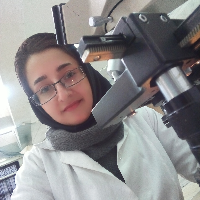Comparison of profile and antimicrobial activity of fresh water reared giant sturgeon (Huso huso, Linnaeus, 1758) epidermal mucus in different body sizes
The fish's primary immune system in epidermis produces the mucosal layer as a surplus mechanism to cover the surface of the fish's body against infections. In addition to its physical functions such as reducing water friction and protecting against abrasion, it contains biologically active constituents, which is the first line of defense against pathogens. During the past years, the antimicrobial activity of various fish mucus has been studied. Due to the lack of information on sturgeon, in the present study, some properties of proteins in the epidermal mucus (Huso huso) as one of the native species of the southern coast of the Caspian Sea were evaluated. In this study, mucus was directly collected from fish surface in three different weight classes (0.4 , 4 and 40 kg) and some properties such as total protein concentration, chromatogram (RP-HPLC) and molecular mass profile of mucus proteins in three weight classes were compared. Antimicrobial activity of mucus was evaluated by disk diffusion, minimum inhibitory concentration (MIC) and minimum bactericidal concentration (MBC). The crude samples of different weights showed no significant difference in protein concentration (1.02 ± 0.03, 1.04 ± 0.01, 1.07 ± 0.02 µg/µl, respectively) but HPLC fraction No.4 in the third weight (40kg) showed a significant higher concentration in comparison to others (α=0.05). SDS-PAGE results revealed that the mucus samples contain peptides and proteins ranging from 5 kDa to 245 kDa with no considerable differences. All chromatograms showed similar numbers of fractions at similar retention time while the area percentage of fractions underwent significant differences in fractions 2, 4 and 9 (α=0.05). Disk diffusion showed the same antibacterial activity against A. hydrophila while group 1 (0.4 kg) had a significantly lower inhibition zone against S. iniae. All the samples possessed the same antimicrobial activity in MIC and MBC assays (MIC48=MBC48=25 µg). The current study revealed that all selected weight groups had the same properties in HPLC chromatogram and SDS-PAGE. Comparison of antimicrobial activity in MIC and MBC tests showed no significant difference between groups while in the disk diffusion test, there were significant differences in the antibacterial activity of weight groups exposed to S.iniaei, which could refer to the test competency. In conclusion, it can be claimed that in terms of protection (non-specific immunity), the first weight group (i.e. ≈ 0.4 kg) reached an evolutionary level as well as higher weights did (i.e. ≈ 4 and 40 kg).
Antimicrobial activity , Huso huso , MIC , Mucus , RP-HPLC
- حق عضویت دریافتی صرف حمایت از نشریات عضو و نگهداری، تکمیل و توسعه مگیران میشود.
- پرداخت حق اشتراک و دانلود مقالات اجازه بازنشر آن در سایر رسانههای چاپی و دیجیتال را به کاربر نمیدهد.





